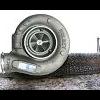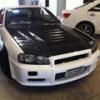I found a good cheap boost controller for $22!!!
Announcements
-
Similar Content
-
Latest Posts
-
Not alot of room in the front or mid pipe to play with Helmholtz chambers, plus they are pretty hit and miss getting the length and volume right, and time is money when it comes to trial and error testing at a exhaust shop, it isn't like test fitting mufflers or resonators From previous experience with exhausts and trying to tone down the volume and eliminate some drone, a resonator in the mid pipe typically make it much better, and even possibly stop Jackie complaining about it, me, I really don't notice it that much, but, I am pretty deaf 🤣
-
I know it's an entirely different engine, but I noticed practically 0 difference removing or adding 2x 3in (5inch body) 400cell cats (one in each bank) with regards to sound. So changing the cat to change drone I suspect will have very very, very, very, very, very very minimal impact.
-
The car revs up through the gears much better/faster now, and fuel consumption doesn't really seem to have be affected either on a Hwy cruise, which wasn't expected The FAB9 intake manifold has been problematic sourcing though, I've contacted Plasmaman to ask about their intake, which you can get different runner lengths spec'd, and, their different options for throttle bodies The only real physical drawback with the Plasmaman intake is how to connect it to my current OEM style airbox, as FAB9 make a OEM style back half of the airbox to suit the larger diameter throttle body, and all that is required is a 30°bend silicone pipe to mate the throttle body to the airbox Car also goes in for some exhaust work in a week or so to fit the biggest resonator they can fit clearance wise in the front pipe to help remove some of the drone, there isn't alot of realestate under there, a rough guesstimation is it will only be about 3-400mm long and maybe 90-100mm diameter, and with a 60mm exhaust that doesn't leave alot of space for the internal volume of the resonator to do its thing I'm thinking I may need to bin the "high flow" 100 cell cat for something a bit more substantial, yeah, and restrictive, like a 200-400 cell, to help, but, I have ample room for a really large bodied cat to replace the current one which has around a 4" diameter body I may look around in the recycling bins and see if I can find a massive newish cat that was "replaced" with some new full exhaust system that the local exhaust shop in Western Sydney is doing
-
www.rollracing.com.au tickets aren’t live yet
-








Recommended Posts
Create an account or sign in to comment
You need to be a member in order to leave a comment
Create an account
Sign up for a new account in our community. It's easy!
Register a new accountSign in
Already have an account? Sign in here.
Sign In Now